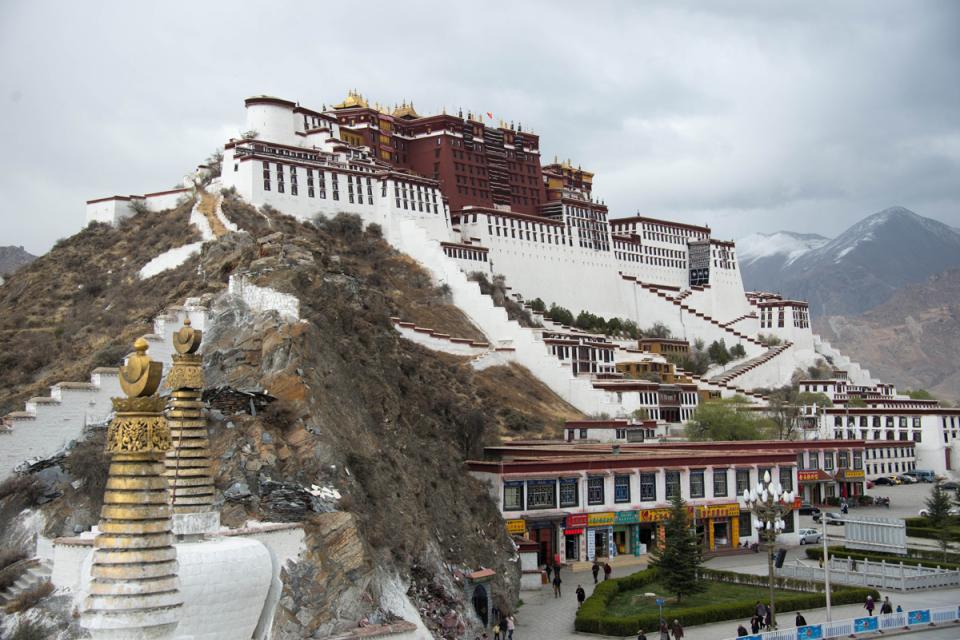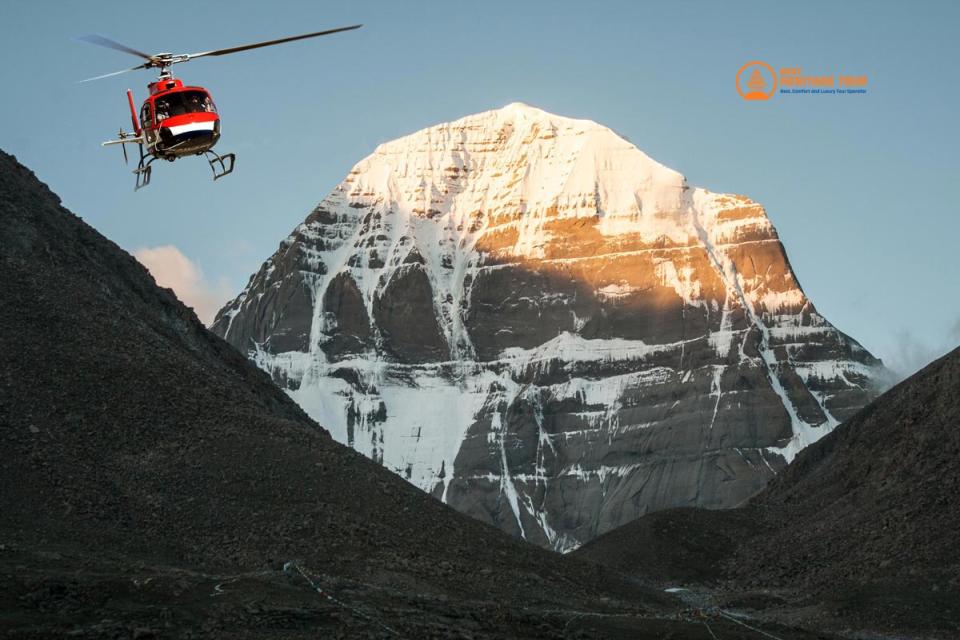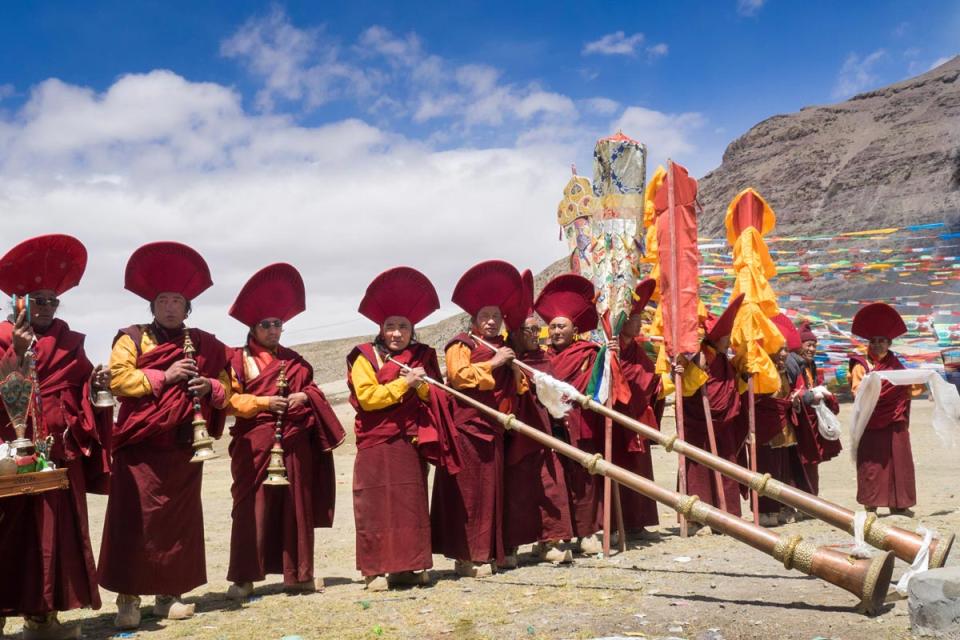Tibet, the “Roof of the World,” is not only famed for its breathtaking landscapes and majestic Himalayan peaks but also for its vibrant and spiritually rich festivals. These festivals provide travelers with a rare glimpse into Tibetan Buddhist culture, traditions, and local life. From colorful masked dances to sacred rituals, experiencing Tibetan festivals is a unique way to immerse yourself in the heart of Tibetan culture.
For travelers planning their trip in 2026, knowing which festivals to witness, when they occur, and what to expect can transform your journey from a sightseeing trip into an unforgettable cultural adventure.
In this guide, curated by Best Heritage Tour, we will explore the top Tibetan festivals in 2026, including their history, significance, locations, and tips for travelers.
Why Tibetan Festivals Are Special?
Tibetan festivals are a beautiful blend of spirituality, folklore, and community celebration. Unlike ordinary holidays, these festivals are deeply tied to:
-
Buddhist religious rituals
-
Lunar calendar dates
-
Local customs and traditional arts
-
Community participation and seasonal events
Attending these festivals offers travelers:
-
Cultural immersion - Engage with monks, local families, and villagers.
-
Spiritual experience - Witness sacred rituals and prayer ceremonies.
-
Photographic opportunities - Vibrant colors, masks, costumes, and dances.
-
Insight into Tibetan lifestyle - Festivals showcase Tibetan food, music, and crafts.
Traveling during festival times also allows visitors to witness rare local traditions that are not part of regular tourist itineraries.
Top Tibetan Festivals to Experience in 2026
Here’s a detailed list of must-experience Tibetan festivals in 2026, along with their highlights:
1. Losar - Tibetan New Year (February 18, 2026)
Overview:
Losar is Tibet’s most important festival, marking the start of the Tibetan lunar calendar. In 2026, Losar falls on February 18, making it a perfect time for travelers seeking cultural immersion.
Highlights:
-
Homes and monasteries are decorated with prayer flags and butter lamps.
-
Families prepare traditional foods, including Guthuk soup, dumplings, and sweet rice cakes.
-
Monks perform prayer ceremonies, rituals, and sacred dances.
-
Public celebrations feature singing, dancing, and cultural performances.
Where to Experience:
-
Lhasa (Jokhang Temple, Barkhor Street)
-
Shigatse
-
Gyantse
Travel Tip:
Losar is extremely busy; book accommodations in advance and prepare for crowded streets around temples.
2. Saga Dawa Festival (May 31, 2026)
Overview:
Saga Dawa celebrates the birth, enlightenment, and death of Buddha, making it one of the most sacred events in Tibetan Buddhism.
Highlights:
-
Pilgrims perform kora (circumambulation) around temples and sacred mountains.
-
Lighting lamps and butter sculptures is common to accumulate merit.
-
Special ceremonies take place at Jokhang Temple in Lhasa and other monasteries.
-
Offerings include incense, food, and charity for the needy.
Where to Experience:
-
Lhasa, Jokhang Temple
-
Sera and Drepung Monasteries
Travel Tip:
During Saga Dawa, expect increased traffic around pilgrimage sites. Respect religious customs and dress modestly.
3. Shoton Festival (Yogurt Festival, August 12-18, 2026)
Overview:
The Shoton Festival combines Tibetan opera, cultural performances, and yogurt celebrations. Originally a monks’ ritual, it now attracts locals and tourists alike.
Highlights:
-
The unveiling of giant thangka paintings of Buddha on monastery walls.
-
Tibetan opera performances with colorful masks and traditional instruments.
-
Families and visitors enjoy yogurt feasts, symbolizing prosperity.
-
Monks and performers conduct rituals to bless the land and people.
Where to Experience:
-
Drepung Monastery, Lhasa (main event)
-
Smaller monasteries across Tibet
Travel Tip:
Arrive early for thangka unveiling; these are large public gatherings that fill quickly.
4. Butter Lamp Festival (Chunga Choepa, Mar 3, 2026)
Overview:
Chunga Choepa, or the Butter Lamp Festival, honors Tara, the goddess of compassion, and is especially popular in Gyantse and Lhasa.
Highlights:
-
Monks and locals light thousands of butter lamps in temples.
-
Ritual prayers and meditation sessions are conducted for peace and prosperity.
-
Visitors witness intricate butter sculptures depicting deities, animals, and symbolic scenes.
Where to Experience:
-
Gyantse Monastery
-
Lhasa, around Jokhang and Sera Monasteries
Travel Tip:
Carry a small flashlight and respect temple boundaries; photography may be restricted in certain areas.
5. Mountain Blessing Festivals (Various Dates, May-September)
Overview:
These festivals honor the sacred mountains of Tibet, believed to be inhabited by protective spirits. They vary by region and date depending on the local lunar calendar.
Highlights:
-
Villagers and monks perform prayer ceremonies near mountains.
-
Traditional mask dances and chants are performed to ensure blessings for the community.
-
Pilgrims offer food, incense, and donations to monasteries.
Where to Experience:
-
Mount Everest Base Camp (Tibetan side)
-
Mount Kailash and surrounding pilgrimage sites
-
Nyingchi region
Travel Tip:
These festivals are more regional and less crowded. Ideal for travelers seeking authentic, offbeat cultural experiences.
6. Monlam Prayer Festival (Tibetan Buddhist Prayer Festival, February 28-March 5, 2026)
Overview:
The Great Prayer Festival, or Monlam, is dedicated to prayers for world peace and the well-being of all sentient beings.
Highlights:
-
Thousands of monks gather to chant prayers.
-
Large-scale prayer wheel ceremonies are conducted in monasteries.
-
Special rituals include scripture recitations, meditation, and debates among monks.
Where to Experience:
-
Drepung Monastery
-
Sera Monastery
-
Lhasa
Travel Tip:
Attend with a knowledgeable guide to understand the rituals and cultural significance.
Why Experiencing Tibetan Festivals is a Must for Travelers
-
Cultural Immersion: Witness Tibetan life firsthand - from monks’ rituals to village celebrations.
-
Photography Opportunities: Vibrant costumes, masks, and traditional ceremonies are visually stunning.
-
Spiritual Connection: Festivals offer a unique insight into Tibetan Buddhism and its values.
-
Seasonal Travel Perks: Most festivals coincide with mild weather, making trekking and sightseeing comfortable.
-
Unique Memories: Few destinations in the world allow travelers to participate in such living traditions.
Tips for Travelers Attending Tibetan Festivals
-
Book Early: Festivals attract crowds; reserve hotels and permits months in advance.
-
Dress Modestly: Long sleeves and pants are recommended for temple visits.
-
Respect Local Customs: Photography may be restricted in some areas.
-
Hire Local Guides: They provide historical context, festival insights, and help navigate large crowds.
-
Stay Hydrated and Rested: High altitude can be challenging, especially during outdoor events.
Best Time to Plan Your Tibet Trip in 2026
For travelers looking to experience Tibetan festivals in 2026, the best months are:
-
January: Monlam Prayer Festival
-
February: Losar (Tibetan New Year)
-
May: Saga Dawa Festival
-
August: Shoton Festival
-
September-October: Regional mountain blessing festivals
-
November: Butter Lamp Festival
Spring (April-May) and Autumn (September-October) are ideal for trekking and sightseeing due to clear skies and moderate temperatures.
Conclusion: Make 2026 the Year You Experience Tibetan Festivals
Tibet in 2026 offers a rare opportunity to witness spiritual traditions, vibrant celebrations, and stunning Himalayan landscapes. From the joyous Losar festivities to the solemn Butter Lamp Festival, Tibetan festivals provide a once-in-a-lifetime cultural journey for travelers, trekkers, and tourists.
Let Best Heritage Tour guide you through Tibet’s most iconic festivals, ensuring a safe, memorable, and authentic experience.
Contact Best Heritage Tour
Phone / WhatsApp / Viber: +977-9851149197 / +977-9810043046
Email: info@bestheritagetour.com / bestheritagetour@gmail.com
Website: www.bestheritagetour.com
Office Address: Thamel Marg, Kathmandu, Nepal
Experience Tibet’s cultural heartbeat in 2026 with Best Heritage Tour - festivals, landscapes, and spirituality await!
Author: Best Heritage Tour
Date: 21st November, 2025







